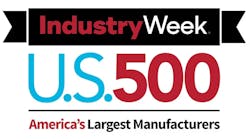Original equipment manufacturers (OEM) don’t always get the benefit of working on aftermarket parts to enhance what they’re building for the direct market. A tough economic climate may force some factory managers to bid for more of this type of business.
According to the Institute of Supply Management (ISM), U.S. manufacturing activity fell to 50.1 in October from 50.2 in September. That’s roughly the minimum mark for growth -- a score below 50 signals industrywide contraction -- and is the lowest since 2013. A separate measure focused on U.S. factory hiring fell from 50.5 to 47.6 as many cut jobs to account for lower exports.
Canadian producers fared even worse as last month’s read of the RBC Purchasing Managers Index (PMI) fell to 48.0 from 48.6 in September and 49.4 in August. Seven times in the first 10 months of the year have Canadian factories suffered at least some measure of contraction.
After last year’s run of abundant growth, suddenly there’s almost nowhere for North American factory managers to hide. Aftermarket production fueled by 3-D printing and other forms of new technology and advanced processes may be a last refuge. Here are five ways for OEM suppliers to gear up and capture aftermarket business:
- Budget for small experiments. Big companies that employ factories have research and development (R&D) budgets. Why shouldn’t the factories themselves have their own R&D operation? Setting aside a few dollars here and there for the purpose of trying a new 3-D printing process or accelerating certain repeatable tasks to leave room for more creative endeavours could pay off nicely when it comes time to seize opportunities in the aftermarket.
- Bring customers to the factory on a regular basis. Your first and most likely source of aftermarket business are the clients who’ve hired you to build their principal products. Replacement parts are a natural fit, of course, but don’t limit your thinking. Instead, host your clients onsite one day a month and talk about what their customers are asking for. Would an add-on part make what you’re building more functional? Take the time to find out and new business could follow.
- Recognize and reward creativity. Other times your workers will have great ideas worth exploring, especially if you run the type of factory that encourages and funds some form of R&D. Set up a formal process of recognizing the innovators on your floor, whether it’s through a company newsletter, email list, or something similar. And don’t stop there; issue creative and highly personalized rewards for ideas that have high-impact potential. Extra vacation for the worker who spent untold hours of unpaid overtime working on a breakthrough, for example.
- Give employees a stake in outcomes. Take new ideas to market with the idea that the employees will have a stake in the outcome. This doesn’t necessarily mean royalties. Rather, measure the net impact a new process or product creates over the course of a year, and then add a percentage of the proceeds to the initiating worker’s annual bonus. And if they aren’t due one, make an exception. Even the smallest payout and lasting name recognition can go a long way towards fostering further innovation.
- Codify best practices and recognize and reward those who devise them. Similarly, you want to single out those who change the business by generating better, more efficient and more profitable practices. There’s no better way to cultivate a high-performance culture.
While there are no guarantees that aftermarket demand will lift your factory in a time of depressed front-end demand, you can take steps to increase your odds. Fund small experiments. Engage with customers where the work gets done. Recognize and rewards workers whose creative ideas are worth pursuing, and then give them a stake in the outcome. Finally, codify best practices so that your team is always doing their best work on current projects as you devise ways to expand your factory’s portfolio.
John Mills is executive vice president of Business Development at Rideau Recognition Solutions, a global leader in employee rewards and recognition programs designed to motivate and increase engagement and productivity across the workforce.




